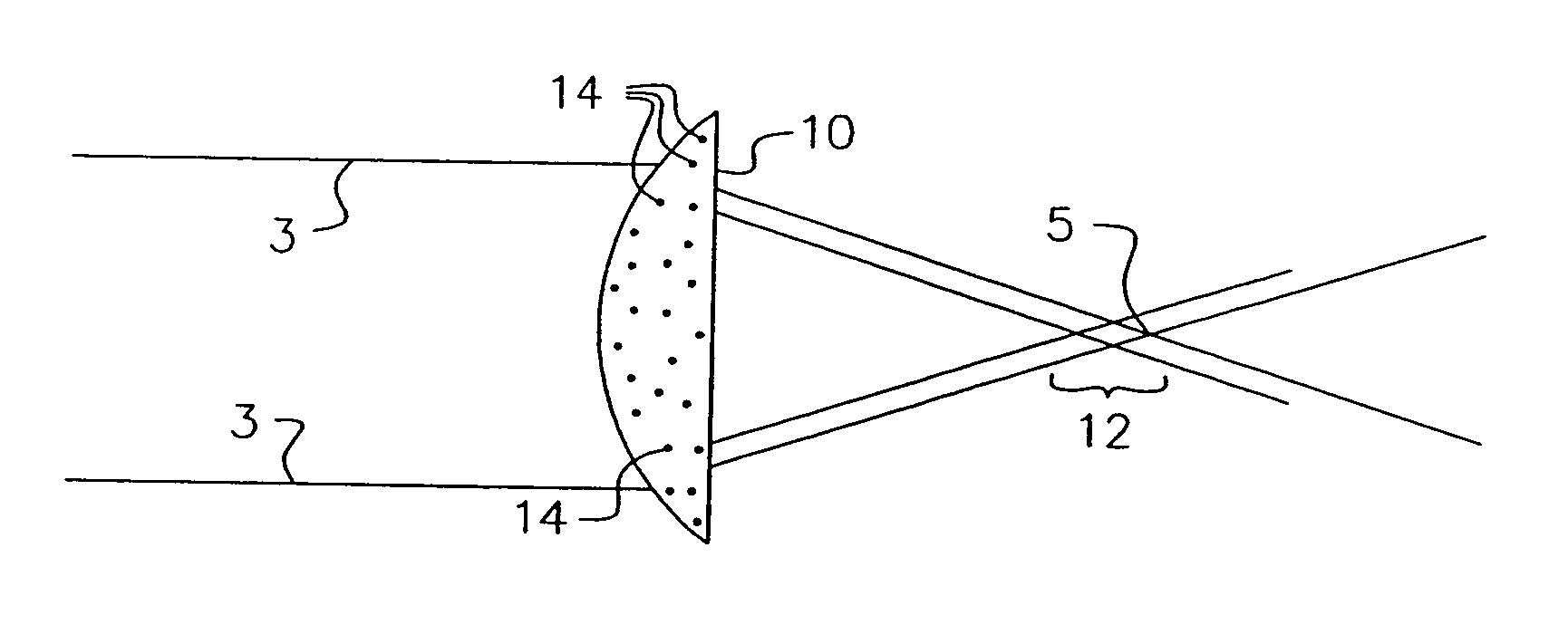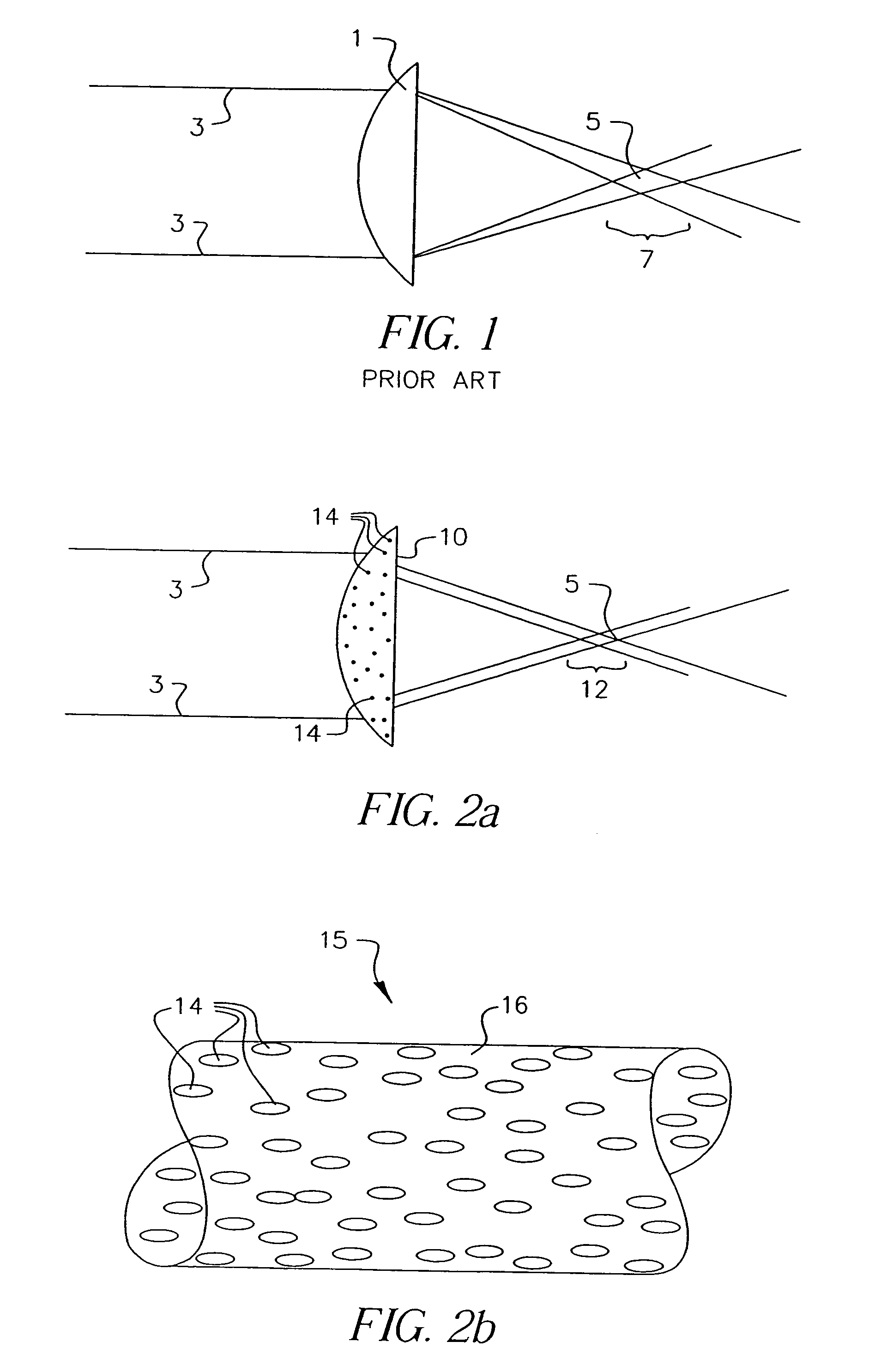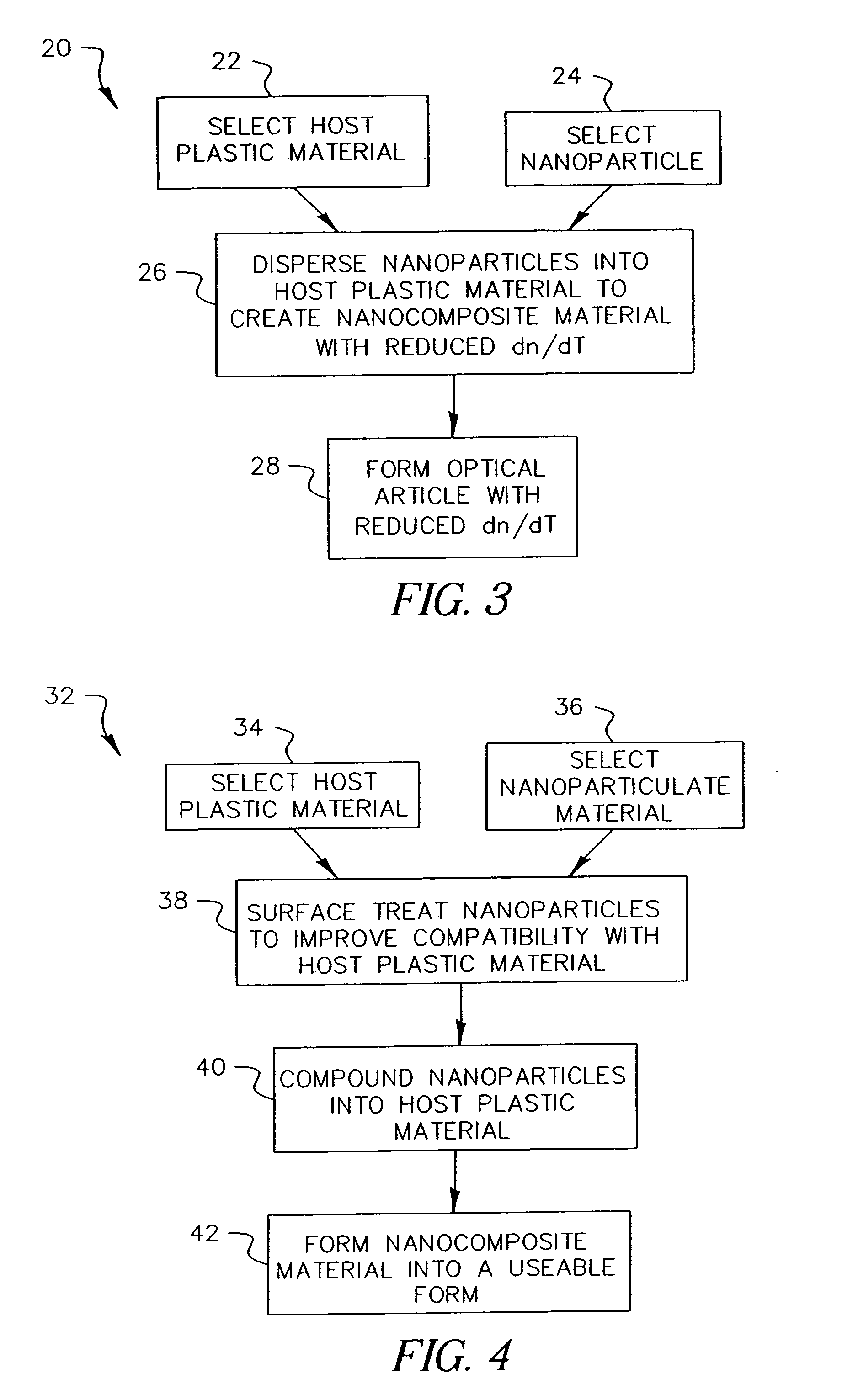Reduced temperature sensitive polymeric optical article and method of making same
a temperature sensitive, polymer technology, applied in the field of polymeric optical materials and articles, can solve the problems of high labor intensity, large cost difference, and high cost of plastic lenses, and achieve the effect of reducing labor intensity, reducing cost, and improving quality
- Summary
- Abstract
- Description
- Claims
- Application Information
AI Technical Summary
Benefits of technology
Problems solved by technology
Method used
Image
Examples
example 1
[0048]An exemplary example of the aforementioned procedure for reducing the dn / dT of an optical plastic follows.
[0049]Polymethylmethacrylate nanocomposite optical plastic comprises a polymethylmethacrylate host material having a temperature sensitive optical vector x1 and a magnesium oxide nanoparticles having a temperature sensitive optical vector x2 dispersed in the polymethylmethacrylate host material. According to the requirements of the invention, x1 is directionally opposed to x2.
[0050]More particularly, a polymethylmethacrylate host material is optically modified with the addition of magnesium oxide nanoparticles. Polymethylmethacrylate has a dn / dT of approximately −110E−6 / ° C. as shown in Table 1. Magnesium oxide has a dn / dT of approximately +19E−6 / ° C. Magnesium oxide nanoparticles are available from Nano Materials Research in the 10 nm size. Magnesium oxide is transparent in the region 0.35–6.8 micron which includes the visible light region. The volume (%) of magnesium oxi...
example 2
[0053]Alternatively, the nanocomposite material above was prepared using a solvent based dispersion process as shown schematically in FIG. 5, with toluene or xylene. The solvent based dispersion process has been successful for wide variety of polymers (polymethylmethacrylate, polystyrene, polycarbonate and cyclic olefin) as well as a variety of nanoparticles (titanium dioxide, magnesium oxide and zinc oxide). The dispersion of the nanoparticles is accomplished in a mill to break up the agglomerates. As a result, well-dispersed solutions have been produced.
[0054]Referring again to FIG. 5, solvent removal 58 can be accomplished at moderate temperature with vacuum. The dried material is then run through an extruder to form pellets. The pellets are then injection molded into optical articles using the process in Example 1.
example 3
[0055]In another case, a polycarbonate host material is optically modified with the addition of aluminum oxide nanoparticles. Polycarbonate has a dn / dT of approximately −114E−6 / ° C. as shown in Table 1. Aluminum oxide has a dn / dT of approximately +14E−6 / ° C. Aluminum oxide nanoparticles are available from Kemco International Associates in the 37 nm size. Aluminum oxide is transparent in the region 0.19–5.0 micron which includes the visible light region. The volume (%) of aluminum oxide nanoparticles required in the polycarbonate host material to reduce the dn / dT by 50% can be calculated based on volume using Equation 2, below.
ν50=0.5(γp / γp−γn) Equation 2
Wherein, ν50 is the volume % of the nanoparticles needed to reduce the dn / dT of the nanocomposite by 50% compared to the host plastic; γp is the dn / dT of the host plastic (See FIG. 1); γn is the dn / dT of the nanoparticle material.
[0056]For the combination of polycarbonate and aluminum oxide, the volume (%) of nanoparticles needed to...
PUM
| Property | Measurement | Unit |
|---|---|---|
| particulate size | aaaaa | aaaaa |
| particulate size | aaaaa | aaaaa |
| temperatures | aaaaa | aaaaa |
Abstract
Description
Claims
Application Information
 Login to View More
Login to View More - R&D
- Intellectual Property
- Life Sciences
- Materials
- Tech Scout
- Unparalleled Data Quality
- Higher Quality Content
- 60% Fewer Hallucinations
Browse by: Latest US Patents, China's latest patents, Technical Efficacy Thesaurus, Application Domain, Technology Topic, Popular Technical Reports.
© 2025 PatSnap. All rights reserved.Legal|Privacy policy|Modern Slavery Act Transparency Statement|Sitemap|About US| Contact US: help@patsnap.com



